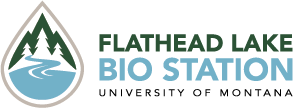Bonnie Ellis
Bonnie Ellis
University of Montana, FLBS
Retired Assistant Research Professor
University of Montana, FLBS
Bonnie first traveled to the Flathead to work on the limnology of Flathead Lake in 1978.
Her research at The Flathead Lake Biological Station over the last 30 years has ranged from the physiological ecology of phytoplankton in Flathead Lake to the dynamics of food webs in the lake and in great steelhead rivers of Kamchatka, Russia. When not at work, Bonnie is either fishing or wishing she was fishing.
Research Interests
I am a limnologist with interests in both lake and stream ecosystems. I am most interested in understanding the physical, biological and chemical factors that control the distribution and abundance of biota. Of the 300 largest lakes in the world, Flathead Lake is one of the most pristine, but water quality is declining. The focus of my Flathead Lake research is on understanding those factors controlling the production of algae. It has been our great fortune to have maintained a long-term record (i.e., 30+ years) of phytoplankton and zooplankton biomass and species distribution, nutrient loading, primary productivity, water clarity and many other important chemical and physical parameters. Determining which natural and anthropogenic factors are of greatest importance in regulating primary productivity in the Lake is one of the major goals of my work.
Recently, I along with my co-authors published a research article in PNAS on the complex food web interactions that led to a trophic cascade in Flathead Lake. This work documented multitrophic level impacts that played out over more than a century and the analysis incorporated data generated by myself and crew over the course of my career.
In 2009 I began a collaboration with Drs. John Kemp and John Toole and scientists Rick Krishfield and Tim Shanahan at Woods Hole Oceanographic Institute to re-engineer ice-tethered telemetered buoyed profilers for use in Flathead Lake as part of our Virtual Observatory and Ecological Information Systems (VOEIS) project. A rigorous design for the telemetered surface meteorological equipment for both lake buoys was developed through collaboration with the NOAA National Data Buoy Center. Numerous FLBS scientists (e.g., Jim Craft, Tom Bansak, Jeremy Nigon) aided in deployment and upkeep of the two profilers and surface met stations that were operated for over two years (2012-2013). Limnological data from throughout the water column (~ every 25 cm depth) of Flathead Lake was transmitted 6X per day near real-time to the Biological Station. In addition, an anonymous donor provided funding to conduct comprehensive temporal and spatial sampling of the lake biological community as well as chemistry and physical dynamics over the same two year period. Data from that sampling in combination with detailed daily measures obtained from the two autonomous lake profilers provided a greatly expanded data set to populate a fully integrative nutrient/foodweb model linked to a 3D hydrodynamic model known as ELCOM-CAEDYM. The model will aid us in understanding how climate change, increased nutrient loading and new invaders may influence thermal stratification, biogeochemical processes, trophic interactions and other important ecological parameters.
Projects
- A report on the potential effects of surface pollutants - Flathead Valley Shallow Groundwater Study

- Long-term effects of a trophic cascade in a large lake ecosystem - Proceedings of the National Academy of Sciences (PNAS)

Education
- Ph.D. (Organismal Biology and Ecology): University of Montana, 2006
- M.S. (Biology): North Texas State University, 1980
- B.S. (Biology): Lamar University, 1975
Awards
- 2014 – Lake Stewardship Award, Flathead Lakers
- 2012 – Conservationist of the Year (with J. A. Stanford), Montana Environmental Information Center

